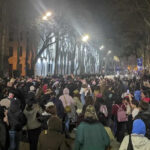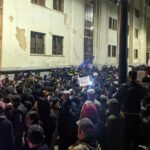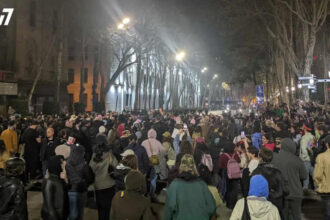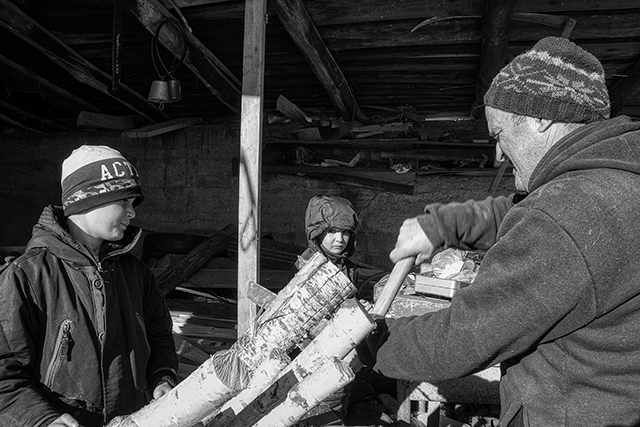Lamproba is the Festival of Torches, which takes place in Upper Svaneti and is centered around Etseri. It is connected to the changing Orthodox Easter date, so it also changes within a certain range. But it’s always held “in the bleak middle of winter”.
I have asked many people but, despite my efforts, I still cannot find a date, century, or enemy as well as the details of the battle that was won near Etseri, by men with burning torches. This time, when I visited my best friend and neighbor in the village, i did learn some interesting details about the festival.
The torches will always be made of straight birch boughs. One per male family member and the largest for St. George. Why birch trees? Why birch? According to legend, Jesus Christ was fleeing from his persecutors and asked an evergreen tree in a forest to hide him under its branches. It refused and pushed the branches up to cover him, instead of lowering them. Another tree of unknown species did the same. The birch, the third tree he asked, obliged and threw its branches to hide him. Birches are revered as torches and other uses in honor of their protection.
Each branch is cut, and while still green and very fresh, it is split at one end many times with an adze. This end is then spread out like a broom. The greenness of the splits ensures they won’t break off. To make the wood burn better, cedar chips (or, more recently, diesel) can be added to the cut.
The men and boys from each family light torches the night before and carry them through the deep snow to the place where the bonfire will be lit. This is usually just outside the church in each hamlet. Our place has a large pagan holy tree, I believe a walnut, just outside the church. It is visibly competing with it for pride in religious place. They light the fire directly on the snow. It burns so hot that it melts through a half meter of snow or more in a few hours, without putting it out.
We greet each other and congratulate them for the Day. After a short time, the women will arrive with bottles of wine or moonshine and bags of round bread loaves. Three loaves at a time are taken by each man and prayed for (ideally in Svan). Georgia is celebrated with toasts. The Virus is making us miss the traditional Georgian feasts in each hamlet. Each year, a different family will host them.
This was the first year that I was asked to join in the prayers of each family in English, and I did so without any objections. It was a great feeling to be shown that I am part of the community.
Two male guests from Canada and Chile were with me. They were fascinated by the proceedings and felt privileged to have been there at the time of the entire event, which they thought was a wonderful medieval-era thing that has been preserved until now. Despite the fact that many details have been lost, this event still unites Svans from all over Georgia, including their own province.
BLOG by Tony Hanmer
Tony Hanmer is a writer and photographer who has been working for GT since 2011. He has lived in Georgia and Svaneti, respectively, since 1999. He runs the “Svaneti Renaissance” Facebook group, now with nearly 2000 members, at www.facebook.com/groups/SvanetiRenaissance/
He and his wife also run their own guest house in Etseri: www.facebook.com/hanmer.house.svaneti
Read More @ georgiatoday.ge













